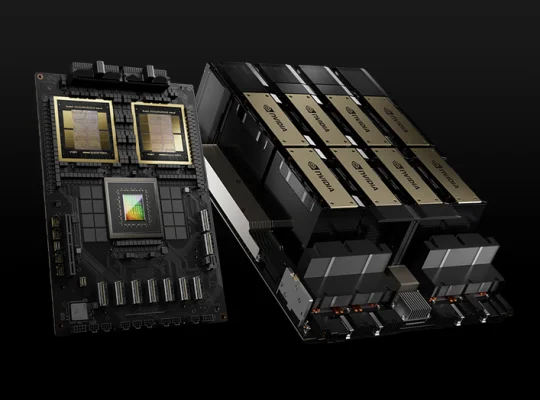Nvidia’s commitment to boosting American semiconductor manufacturing is multi-faceted and extends beyond just the financial investment.
1. Strategic Shift in Global Supply Chains:
Nvidia’s traditional model, like many fabless semiconductor companies, relied heavily on outsourced manufacturing, primarily in Taiwan. Their current investment signals a significant strategic pivot towards diversifying and strengthening their supply chain by bringing critical production steps to the US. This is a direct response to:
* Geopolitical Risks: The increasing tensions surrounding Taiwan have highlighted the vulnerability of a highly concentrated semiconductor supply chain. By establishing production in the US, Nvidia reduces its exposure to potential disruptions.
* Trade Policies and Tariffs: The “America First” policies and the threat of tariffs on imported goods have also incentivized companies to onshore production. Nvidia’s move can help them navigate these policy landscapes and potentially benefit from government incentives.
* Demand Fluctuation: The enormous and rapidly growing demand for AI chips requires a more resilient and responsive supply chain. Domestic production can offer better control over inventory and lead times.
2. Building a Complete Ecosystem in the US:
Nvidia isn’t just bringing chip fabrication to the US; they are establishing a more comprehensive AI manufacturing ecosystem:
* Front-End (Chip Fabrication): This is handled by TSMC’s Arizona fabs, where Nvidia’s cutting-edge Blackwell chips are already in production. This involves the complex process of creating the raw silicon wafers and then etching the intricate circuit designs onto them.
* Back-End (Packaging and Testing): This crucial step, which involves connecting the chip to its packaging and ensuring its functionality, is being brought to Arizona through partnerships with companies like Amkor and SPIL. This is particularly important for advanced AI chips, which often use sophisticated packaging technologies like 2.5D and 3D stacking.
* System Assembly: Beyond individual chips, Nvidia is establishing facilities with Foxconn and Wistron in Texas for the assembly and testing of complete AI supercomputers. These are “AI factories” designed for processing massive AI workloads. This means the entire journey from raw silicon to fully functional AI systems will have significant US content.
3. Technological Advancement and Automation:
Nvidia isn’t just building traditional factories. Their approach incorporates their own advanced technologies to optimize production:
* AI and Robotics: The new factories will leverage Nvidia’s AI, robotics, and digital twin technologies. This includes using platforms like NVIDIA Omniverse for factory simulation and Isaac GR00T for robotics, aiming to optimize design, construction, and automation processes. This not only increases efficiency but also showcases the capabilities of their own technology within manufacturing.
* Computational Lithography (cuLitho): Nvidia has partnered with TSMC and Synopsys to integrate its cuLitho platform into their chip manufacturing workflows. This technology uses accelerated computing and generative AI to speed up the chip fabrication process, reduce cycle times, and improve throughput. This directly contributes to pushing the boundaries of semiconductor scaling in the US.
4. Impact on US Tech Leadership:
Nvidia’s investment reinforces the US’s position as a leader in advanced computing hardware, particularly in the critical field of artificial intelligence. By bringing cutting-edge AI chip and supercomputer production to the US, it fosters:
* Innovation Hub: The presence of these advanced manufacturing facilities can attract further investment and talent, creating a stronger innovation ecosystem in the US.
* National Security: Domestic production of critical AI infrastructure reduces reliance on foreign supply chains, enhancing national security and technological self-sufficiency.
* Economic Growth: Beyond direct job creation, the investment has a ripple effect on related industries, from construction to logistics and supporting technology services.
5. Alignment with the CHIPS and Science Act:
While Nvidia’s massive investment predates some of the direct CHIPS Act allocations, it strongly aligns with the act’s goals. The CHIPS Act provides significant financial incentives (grants, loans, loan guarantees, and tax credits) to companies investing in domestic semiconductor manufacturing. Nvidia’s move positions them and their partners to potentially benefit from these incentives, further accelerating the growth of US semiconductor production. The increased domestic manufacturing capacity, driven by companies like Nvidia, validates the intent and impact of such governmental initiatives.
In essence, Nvidia is not merely building factories; they are strategically re-architecting their supply chain to be more resilient, geographically diversified, and technologically advanced, with a significant emphasis on US-based operations. This contributes substantially to the overall American semiconductor manufacturing content and strengthens the nation’s position in the global technology landscape.
















